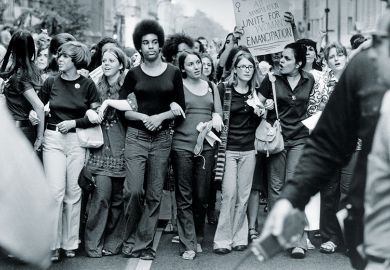Certain news events leave an indelible imprint in one’s mind.
Some of these will be universal, others particular to the individual. For me, one such story was the Waco siege in 1993. Not that it had any direct significance for a 13-year-old in Cambridge, England, when the Texan headquarters of a religious sect went up in flames. But something about the dramatic news footage, an early interest in journalism, perhaps, and the idea of a religious cult led by a would-be messiah made a big impression.
I was mulling this over last week as I drove from Austin to Waco on a trip to a Baptist university – one of several Texan university visits while in the US for a conference.
It is a drive that confirms one’s preconceptions about the lone star state. Giant billboards at the side of the road advertise gun shows and God; fast food and private education.
One, styled like a no-smoking sign, had a picture of apes evolving into man crossed out inside a red circle, with a telephone number along the lines of 376-886-TRUTH (this is not the actual number, so don’t bother calling).
Passing billboard after billboard, it struck me how much of society – even one that considers itself defined by the sanctity of individual freedom – is organised around institutions. The church, the National Rifle Association, the religious cult, the university (I make no connection).
Another institution that Texas has in multitudes is prisons. Huntsville, the state penitentiary, has the most active execution chamber in the country, while the US has the highest rate of imprisonment in the world. A higher proportion of state budgets is now spent on prisons than on higher education.
This is some statistic, but it wasn’t always so – 30 years ago prisons accounted for 3 per cent of state budgets and colleges about 15 per cent.
One way to reverse this trend, a waste of life as well as money, would be to focus more attention on education as a route to rehabilitation, and there are examples of outreach programmes that are successful in helping prisoners to turn their lives around.
That is as true in the UK as the US, and in our features pages this week we explore one such project, and its impact not only on inmates, but – in this instance – on undergraduate students, who have the opportunity to learn alongside them.
In our cover story, meanwhile, we consider another type of institution that some believe exists on campus – a membership organisation of sorts that segregates along gender lines.
While the old boys’ network has long been discussed, and arguably continues to persist in the shadowy realm of unconscious bias, our feature considers whether there is such a thing as an academic “sisterhood”. If there is, what form does it take, and does it help to address inequality in academia? And if no such institution exists, should it?
The sexual harassment (and worse) that has been exposed in several industries over the past six months has dominated headlines and demanded a reappraisal of how enlightened our times really are. Will future generations look back on the Harvey Weinstein scandal as one that is burned into their consciousness? And if so, will it change anything?
Perhaps. What’s clear is that institutions, from the church to the NRA to Hollywood studios, are all under pressure for reasons that, in one form or another, relate to harm and abuse.
Universities do not fall into this category, but their copybook is hardly spotless when it comes to gender equality, and in recent months we have reported on issues of abuse of power in academia that also feed into what is undoubtedly the story of our time.
If, in this context, women in academia are taking measures to help each other out – sisters doing it for themselves in the face of institutionalised bias – it’s easy to understand why.
Register to continue
Why register?
- Registration is free and only takes a moment
- Once registered, you can read 3 articles a month
- Sign up for our newsletter
Subscribe
Or subscribe for unlimited access to:
- Unlimited access to news, views, insights & reviews
- Digital editions
- Digital access to THE’s university and college rankings analysis
Already registered or a current subscriber? Login


